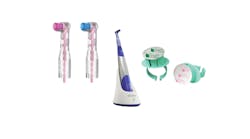Kratom, a botanical product from the Mitragyna speciosa tree of Southeast Asia, has become popular recently as an herbal supplement pain reliever. While supporters believe its benefits include pain relief and mood enhancement, there are potential dangers associated with Kratom use.
Kratom is marketed as a natural and legal alternative to opioids.1 Dental clinicians should be aware of these dangers and be on the lookout for Kratom abuse by patients. It’s available via online vendors, specialty stores, smoke shops, and even gas stations. This easy access contributes to its growing use.
You might also be interested in
Complications of chronic alcohol abuse: What dental hygienists can do
Gabapentin: The most dangerous drug in America?
Forms of Kratom
Kratom is available in a variety of forms, each different in potency and the onset of effects. The most common forms are dried leaves, which can be chewed or brewed into tea; powder, ground leaves that can be mixed with liquids or added to foods; capsules, which come in premeasured doses for convenience; extracts, highly concentrated forms obtained through extraction processes; and tinctures, liquid extracts that are often taken sublingually.
One popular way to consume it is “toss and wash,” where the user washes down the Kratom powder with a sweet beverage. Another popular way is to mix Kratom powder into a sweet drink. Kratom is bitter and the sugar in sweet beverages cuts the bitter taste.
Signs and symptoms of abuse and addiction
It can be challenging to identify Kratom abuse due to its varying effects on people. Dental professionals should be on the watch for patients who displaying or discuss signs and behaviors such as mood swings and irritability, weight loss and decreased appetite, nausea and vomiting, insomnia and disrupted sleep, constipation, social withdrawal, anxious or agitated behavior, cravings for Kratom, xerostomia, and increased incidence of dental caries.
Dangers of Kratom
While fans boast of Kratom's potential benefits, there are potential dangers as well. It contains alkaloids that can interact with opioid receptors in the brain, which leads to opioid-type effects. This can result in tolerance, dependence, and withdrawal symptoms when use is stopped. For some people, Kratom can be as addictive as cocaine.2 Its use can also cause liver toxicity. With the toss and wash method, there may be tooth decay due to the sweet beverages, as well as an increased instance of xerostomia.
Although rare, there have been documented cases of Kratom-related deaths. Most fatalities involve people with a history of polysubstance use. There’s the risk of overdose, especially when Kratom is used in conjunction with other substances. The most at-risk combinations are Kratom with antidepressants, sleeping medications, and/or opioids. Signs of Kratom overdose include confusion, seizures, and difficulty breathing.
Withdrawal symptoms
Withdrawal symptoms can vary in intensity and duration depending on the individual's use patterns, the duration of use, and dosage. Common withdrawal symptoms may include muscle aches and pains, nausea and vomiting, anxiety and irritability, insomnia, runny nose and watery eyes, sweating, fatigue, depression, and cravings.
Withdrawals can start within hours after the last dose of Kratom and peak within a few days. Symptoms typically subside after a week or two, though some people may experience delayed symptoms or symptoms that last longer. Withdrawal is very individualized and correlates with how long the person used it and the dosage of the person.
Identifying abuse and providing help
Dental clinicians can help identify potential incidences of Kratom abuse. Regular patient assessments, open communication, and noticing changes in behavior or appearance can aid in early detection. When abuse is suspected, approach the situation with understanding and concern. Be aware of any opioids prescribed for these patients as overdose due to polypharmacy is possible. Referring patients to substance abuse professionals and treatment programs can provide support for recovery.
Kratom's increasing popularity raises concerns about its potential dangers: abuse, addiction, adverse effects, and withdrawal symptoms. Dental clinicians should stay up-to-date about its various forms, any signs of abuse, and potential interactions with other medications. By recognizing the signs early and offering support, dental clinicians can contribute to the well-being of their patients and help them navigate the challenges of Kratom abuse.
References
1. Kratom. National Institute of Drug Abuse. March 25, 2022. Accessed October 19, 2023. https://nida.nih.gov/research-topics/kratom
2. Henningfield JE, Fant RV, Wang DW. The abuse potential of kratom according the 8 factors of the controlled substances act: implications for regulation and research. Psychopharmacol. 2018;235(2):573-589. doi:10.1007/s00213-017-4813-4
Lisa Curbow, BAAS, RDH, CDP, has been in clinical practice for nearly 30 years in periodontal and general offices. She’s also served as an office manager and hospital coordinator. Having a child on the spectrum fostered her interest in better serving those with intellectual and developmental disabilities. Lisa’s passion is in empowering others to be better equipped to treat patients with special needs. She is a member of the SCDA, AADMD, ADHA, and iADH. Contact her at [email protected].






